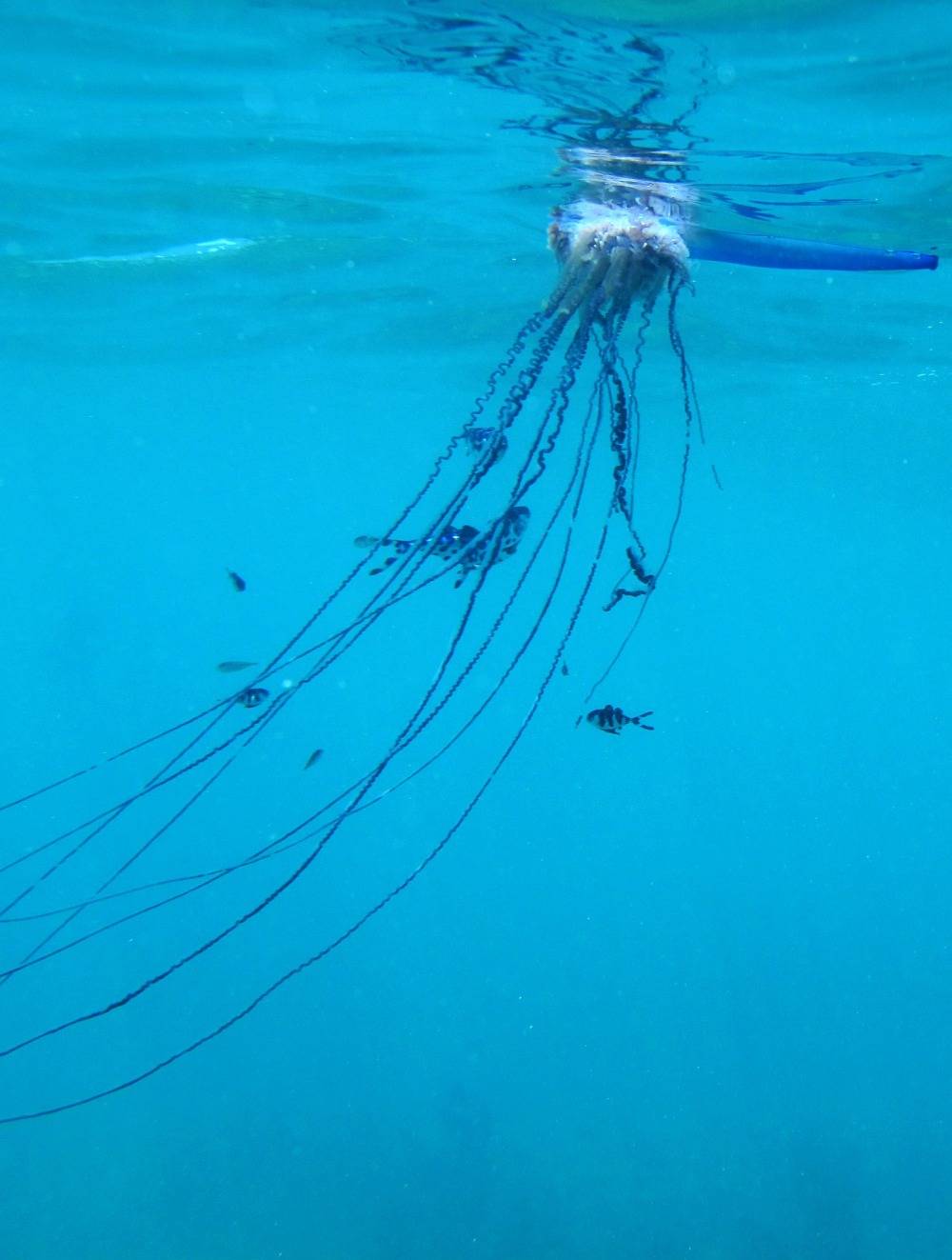
This Blue Sea Dragon ‘Steals’ Venom from Its Prey to Create an Even More Powerful Sting
Interestingly, the Glaucus atlanticus’ choice of meal is a dangerously venomous siphonophore, the Portuguese Man o’ War. The sea dragon is able to prey on the “Floating Terror” because it’s immune to the Man o’ War’s venomous nematocysts (capsules on its body surface), which deliver a painful sting powerful enough to kill fish, and has been known to occasionally kill humans. It has tentacles that can grow up to 165 feet long and sting tens of thousands of beachgoers every year. That vicious sting is rarely life threatening to humans, but can be extremely painful. However, unlike the Man o’ War, the blue sea dragon isn’t venomous on its own.
The dragon uses its tiny serrated teeth and a strong jaw to grasp and consume the Man o’ War. As it eats chunks of its venomous prey, most of the nematocysts are being collected and stored at the tip of the feather-like “fins” on the animal’s body. When it’s touched or threatened, it can release the concentrated venom for a way more powerful sting than the Man o’ War.
The dragon uses its tiny serrated teeth and a strong jaw to grasp and consume the Man o’ War. As it eats chunks of its venomous prey, most of the nematocysts are being collected and stored at the tip of the feather-like “fins” on the animal’s body. When it’s touched or threatened, it can release the concentrated venom for a way more powerful sting than the Man o’ War.
Advertisements
05 April 2022
Advertisements



